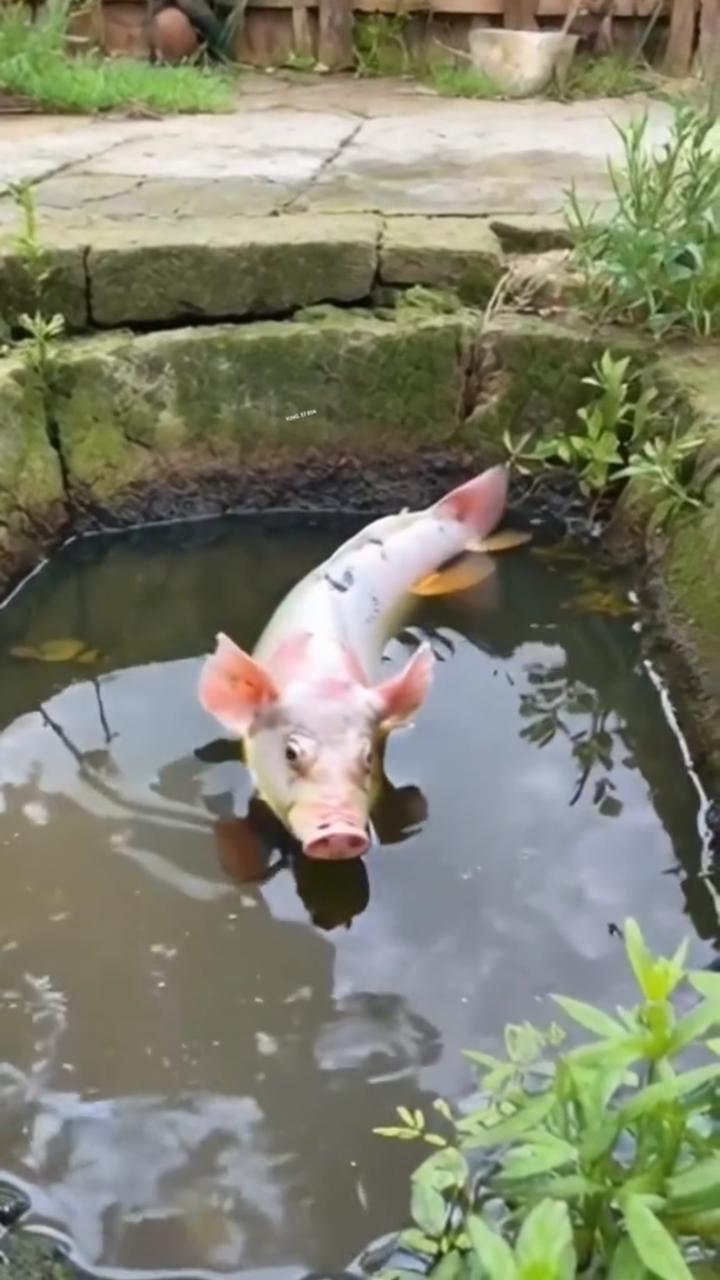The Truth Behind the Viral “Fish Turned into Pig” Video

In the age of digital media, it’s not uncommon to come across sensational stories and videos that capture our imagination. One such story that has recently gone viral is the claim that a fish turned into the shape of a pig. The video, which has been widely shared on social media, shows a fish swimming in a lake with a head that resembles a pig. According to those who captured the video, a fish and a pig were together, and suddenly, this transformation occurred. But is there any truth to this astonishing claim? Let’s dive into the details and uncover the reality behind this viral sensation. 🌐
The Power of Artificial Intelligence and Digital Fabrication 🤖
First and foremost, it’s essential to understand the capabilities of modern technology, particularly artificial intelligence (AI) and digital fabrication tools. AI has advanced to the point where it can create highly realistic images and videos that can easily deceive the average viewer. This technology, known as deepfake, uses machine learning algorithms to manipulate visual and audio content, making it appear authentic. 🎥✨
In the case of the “fish turned into pig” video, it’s highly likely that AI and digital editing tools were used to create the illusion of a fish with a pig’s head. By blending and morphing images, skilled digital artists can produce convincing footage that seems real but is entirely fabricated. This technique has been used in various contexts, from entertainment to misinformation campaigns. 🖥️🔍
Debunking the Myth: Biological Impossibilities 🧬
From a biological standpoint, the idea of a fish transforming into a pig is entirely implausible. Fish and pigs belong to different classes of animals with vastly different anatomical and physiological characteristics. Fish are aquatic creatures with gills, fins, and scales, while pigs are terrestrial mammals with lungs, hooves, and fur. The genetic and evolutionary differences between these two species make such a transformation impossible. 🐟❌🐷
Moreover, the concept of one animal suddenly changing into another defies the principles of biology and evolution. Evolutionary changes occur over millions of years through gradual adaptations and natural selection, not instantaneously. Therefore, the claim that a fish turned into a pig is not supported by any scientific evidence. 🧪🔬
The Role of Social Media in Spreading Misinformation 📱🚀
Social media platforms play a significant role in the rapid dissemination of information, both true and false. The viral nature of the “fish turned into pig” video highlights how easily misinformation can spread. People are often drawn to sensational and shocking content, which can lead to the rapid sharing of such videos without verifying their authenticity. 📲💥
It’s crucial for viewers to approach such content with a critical mindset and seek out credible sources for verification. Fact-checking websites and scientific communities can provide valuable insights and debunk false claims. By being vigilant and discerning, we can help curb the spread of misinformation and promote a more informed society. 🕵️♂️🔍
Conclusion: Embracing Critical Thinking and Digital Literacy 🧠💡
In conclusion, the viral video claiming that a fish turned into the shape of a pig is a clear example of digital fabrication and the power of artificial intelligence. While the video may be entertaining and intriguing, it’s essential to recognize it for what it is: a cleverly crafted piece of digital art. By understanding the capabilities of modern technology and approaching sensational claims with skepticism, we can better navigate the digital landscape and avoid falling prey to misinformation. 🌐🛡️
Remember, not everything you see on the internet is true. Stay curious, stay informed, and always question the extraordinary. 🌟🧠







